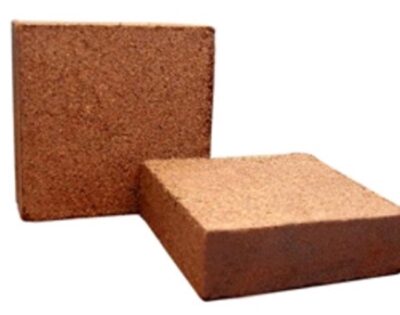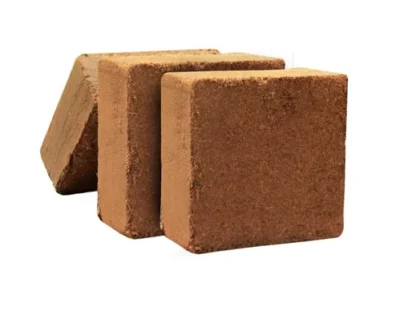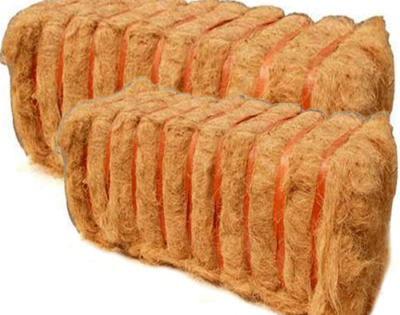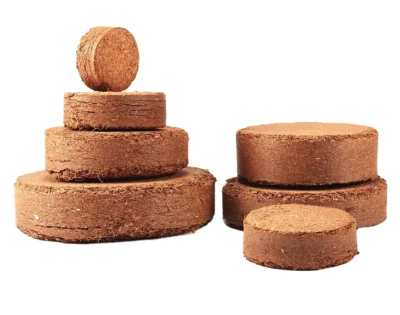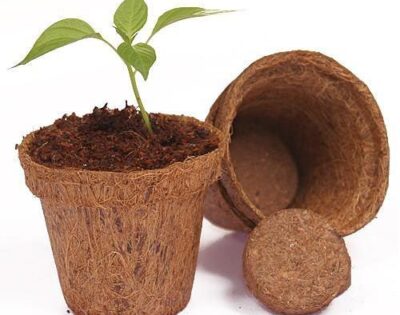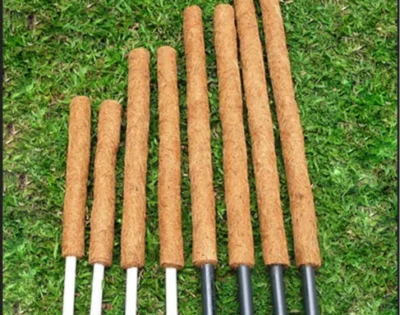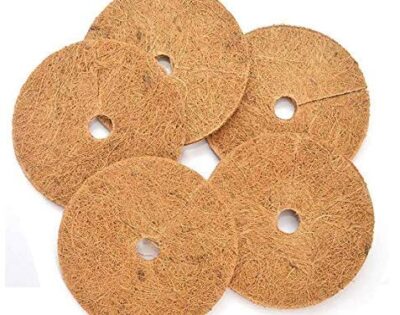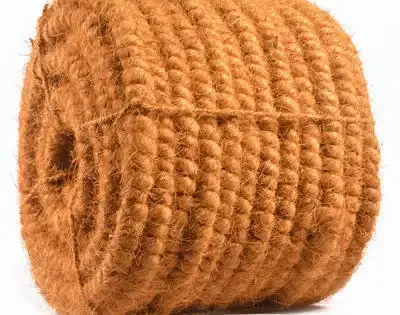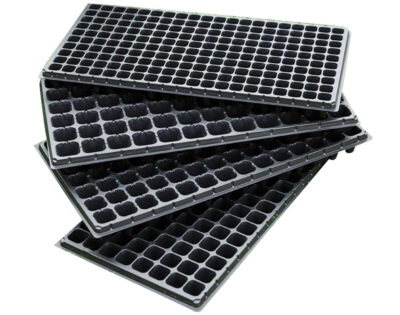Buffered Coco Peat

Buffered coco peat is a type of coco peat that has been pre-treated or “buffered” to remove excess sodium ions and balance out the naturally occurring potassium. Coir pith, which is the fibrous material that surrounds the coconut shell, is a common source of coco peat. In its natural state, coir pith contains high levels of sodium ions that can cause issues for plants grown in the coco peat, such as calcium and magnesium deficiency.
To buffer coco peat, it is soaked in a solution high in calcium for a specific duration of time, which displaces the sodium ions and balances out the naturally occurring potassium. After the soaking period, the coco peat is washed thoroughly with water to remove any excess sodium ions, leaving only the calcium in the coco peat. This buffering process ensures that the coco peat is free from unwanted elements and ideal for use as a growing medium, with optimal levels of calcium and magnesium and no issues related to sodium toxicity. Buffered coco peat is widely used as a growing medium in hydroponic and traditional soil-based agriculture, and is valued for its ability to promote healthy root growth and high crop yields.
5kg Buffered Coco pith Block
| Weight: | 5 Kg +/- 200 gm |
| Size: | 30 x 30 x 12 cm |
| Compression ratio: | 5:1 |
| Moisture content: | less than 20% |
| Electrical conductivity: | less than 0.7 mS/cm |
| Expanded volume: | 14 to 15 liters per kg |
| Sodium complex: | less than 1.0 mmol/litres |
| Potassium complex: | less than 2.0 mmol/litres |
| Chloride: | less than 2.5 mmol/litres |
| Packing | 219 blocks per pallet |
| Load ability | 20 pallets / 22 M.Ton in one 40 feet HC container |
1kg Buffered Coco pith Block
| Weight: | 1 Kg +/- 50 gm |
| Size: | 21 x 14 x 8 cm |
| Compression ratio: | 5:1 |
| Moisture content: | less than 20% |
| Electrical conductivity: | less than 0.7 mS/cm |
| Expanded volume: | 9 Liters per briquette |
| Sodium complex: | < 1.0 mmol/litres |
| Potassium complex: | < 2.0 mmol/litres |
| Chloride: | < 2.5 mmol/litres |
| Packing | 1050 blocks per pallet with all blocks individually shrink wrapped |
| Load ability | 20 pallets / 21 MT in one 40 feet HC container |
650grm Buffered Coco pith Block
| Weight: | 650 gm +/- 20 gm |
| Size: | 20 x 10 x 5 cm |
| Compression ratio: | 5:1 |
| Moisture content: | less than 20% |
| Electrical conductivity: | less than 0.7 mS/cm |
| Expanded volume: | 9 Liters per briquette |
| Sodium complex: | < 1.0 mmol/litres |
| Potassium complex: | less than 2.0 mmol/litres |
| Chloride: | less than 2.5 mmol/litres |
| Packing | 2000 blocks per pallet |
| Load ability | 20 pallets / 25.2 M.Ton in one 40 feet HC container |
Packing Details
Packing details are as per customer requirements.
| All types of packing are available. |
| Only Coco Blocks are available. |
| The product is made of 100% coco pith or coco husk, or a mix of both, depending on customer requirements. |
| Loading options include floor loading or palletizing, depending on the customer’s needs. |
OUR PRODUCTS
Buffered Coco Peat FAQ
How do you make buffered cocopeat?
Add water blended with calcium and magnesium nutrients into the drainage bucket with the coco coir. A good starting point is every 100 grams of coco coir needs about 2 grams of calcium and . 5 grams of magnesium. This is the step that is referred to as buffering.
What is the difference between buffered and non buffered coco coir?
There is a considerable difference between buffering media compared to washing it. Washing coco coir coco coir simply removes water soluble components like sodium which has built up over time. On the other hand, Buffering reverses the bonds between the media and the salts, releasing the potassium and the sodium.
How much calcium nitrate to buffer coco coir?
To prepare the buffering solution: Add 5 gallons of water to your bucket, followed the 0.14 oz (or 4 grams) of magnesium sulfate, and stir until dissolved. Now add the 0.5 oz (or 14 grams) of calcium nitrate and stir again. Depending on how much coco coir you have, you will likely need to make multiple batches.

